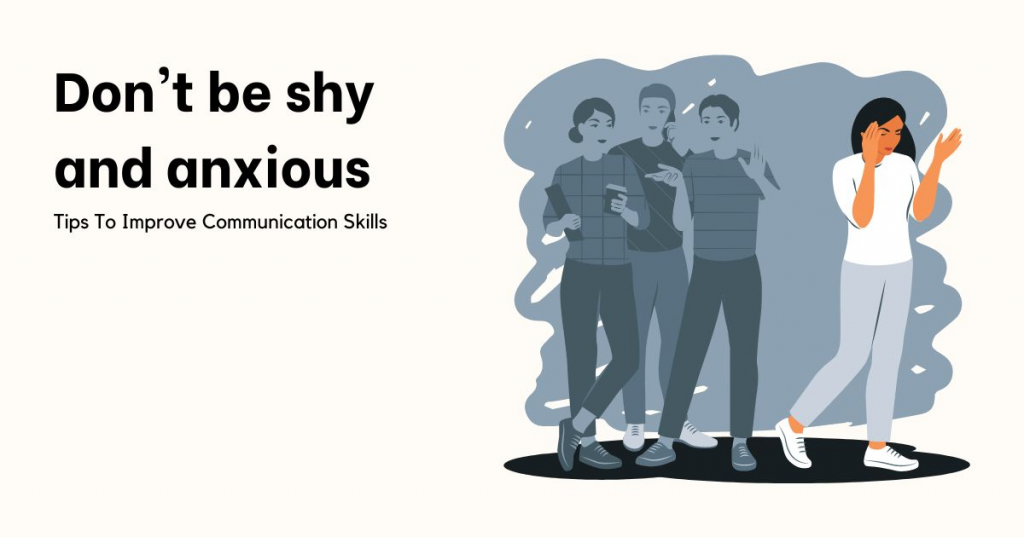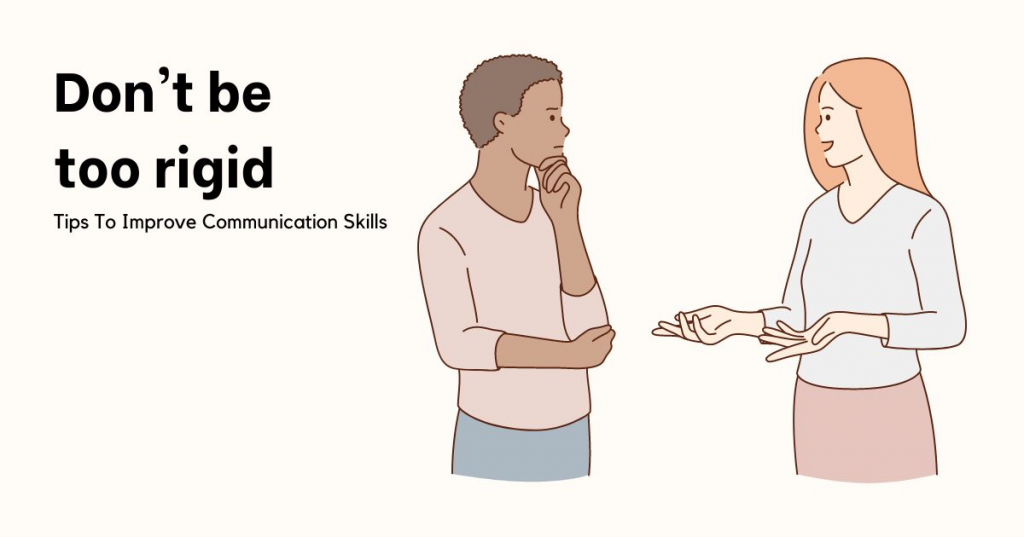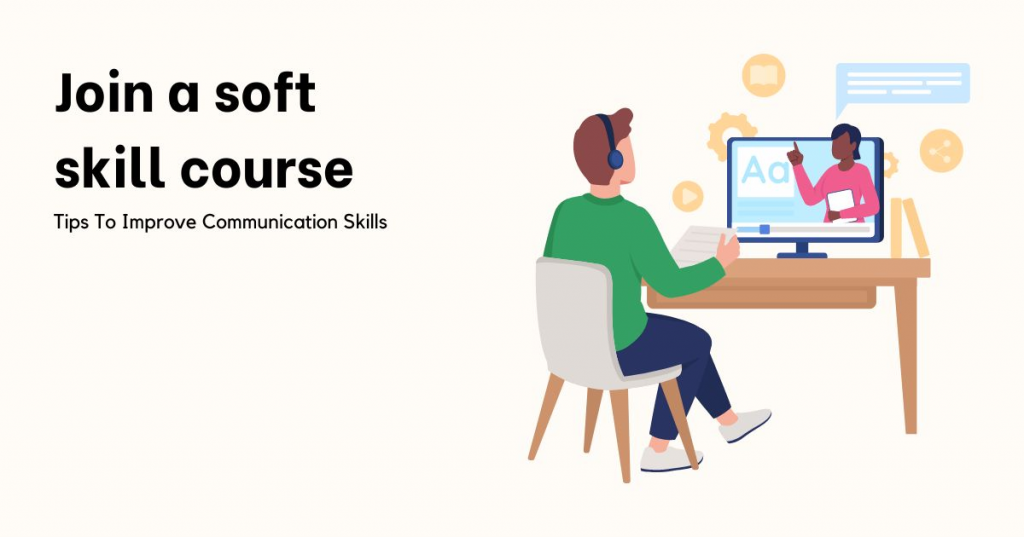The 10 Best Tips To Improve Communication Skills
Communication skills are the foundation for other soft skills. Without good communication skills, you will not be able to develop other skills smoothly. This article will give you tips on how to effectively improve your communication skills.
Keep reading!
Type of communication
Communication Skills are essential for effective interaction and understanding. They encompass both verbal and non-verbal elements. Face-to-face communication offers the advantage of direct observation of body language and facial expressions, aiding in understanding the underlying emotions and intentions. Written communication, while lacking immediate feedback, allows for careful thought and consideration of language. Emotional intelligence plays a crucial role in effective communication, enabling individuals to understand and respond appropriately to the emotions of others. People may make sure they are getting correct and comprehensive information by actively listening and asking questions.
Best Tips To Improve Communication Skills
Here are some tips and advice to improve your communication skills:
Don't be shy and anxious

Feeling shy or anxious in social situations is incredibly common. Studies suggest that social anxiety disorder (SAD) affects around 15 million adults in the United States alone, with shyness impacting a much larger population. These feelings can hold us back from connecting with others, pursuing opportunities, and achieving our goals. But the good news is, communication skills can be learned and improved.
Step outside your comfort zone to become a stronger communicator. While feeling nervous is natural, pushing through those shy and anxious feelings allows your message to shine through with clarity and confidence.
Embrace opportunities to speak up, even if it starts small. Remember, everyone experiences moments of self-doubt, but growth comes from stepping outside your comfort zone.
Here are some tips to apply this advice:
Start small: Don't jump straight into giving a presentation to a large audience. Begin by engaging in small conversations with people you might not know as well, offering your thoughts in group discussions, or volunteering for low-pressure speaking opportunities.
Prepare and rehearse: Feeling well-prepared can significantly reduce anxiety. Before any speaking opportunity, take time to gather your thoughts, organize your message, and rehearse what you want to say.
Focus on the message: Instead of dwelling on your nervousness, shift your focus to the message you want to convey. Think about the value you can bring to the conversation or the impact you want to make.
Embrace mistakes: Everyone makes mistakes, and these moments are valuable learning experiences. Don't dwell on any stumbles or missteps. Instead, view them as opportunities to grow and improve.
Make an impression on your first meeting
The truth is, first impressions hold immense weight. Studies by Princeton University researchers found that it takes just a tenth of a second for someone to form an impression of you.
That's lightning fast! But fear not, because this also means you have the power to shape that perception through strong communication skills. Let's delve into how to make a positive and lasting impact during your first meeting.
Let your enthusiasm shine through with a sincere smile. Craft a memorable introduction that reflects your personality, leaving a lasting impression and fostering smoother interactions down the line.
Here's how to apply this advice::
Warm Greeting: Start with a friendly "hello" or "good morning/afternoon," depending on the time of day. Use the person's name if you know it. A simple "Hi [name], nice to meet you" works well. Maintain a warm and welcoming tone of voice.
Genuine Engagement: Make eye contact when you greet the person. This shows you're present and interested in the interaction. Maintain eye contact throughout the conversation, but avoid being overly intense or staring. Pay attention to what they're saying and respond thoughtfully.
Sincere Smile: Let your smile be genuine and reach your eyes. This creates a positive and approachable impression. Avoid forced smiles as they can appear disingenuous.
Memorable Introduction: Briefly introduce yourself with your name and a key detail that reflects your personality or interests. Keep it brief and avoid rambling on.
Use names in communication
Addressing someone by name instantly personalizes your interaction. It conveys respect, attentiveness, and an acknowledgement of their individual identity, fostering a warmer and more welcoming connection.
However, remember to use names naturally and avoid excessive repetition, which can feel forced and inauthentic.
Here are some tips on how to apply the advice on addressing someone by name:
Use names when introducing yourself and others. This is basic courtesy and sets the foundation for personal interaction.
Use names throughout the conversation, but not excessively. Aim for a natural flow. Mentioning someone's name once or twice in a conversation is usually enough to personalize the interaction without seeming forced.
Use names appropriately. Consider the context and your relationship with the person. In formal settings, such as a job interview, use title and last name (Mr./Ms./Dr. Lastname). In informal settings, like with friends, first names are often appropriate.
Pay attention to pronunciation. Try to pronounce someone's name correctly. If you're unsure, ask politely for clarification.
Observe how other people use names in this situation. This can help you evaluate the appropriate level of formality and frequency of name use.
Please respect cultural differences. In some cultures, there may be specific rules or preferences about how to address people. Do research or observe first if you are unsure.
Show sincerity and openness

Strong relationships, both personal and professional, rely on trust. Stephen Covey, author of the renowned book "The 7 Habits of Highly Effective People," emphasizes that trust is the foundation of all interactions. He states, "Trust is the glue that holds relationships together. It is the essential ingredient for effective communication."
People appreciate sincerity and are more likely to connect with you when you're honest. Be open and approachable. This encourages others to share freely, leading to richer and more meaningful interactions.
Here are some practical ways to apply the principles of building trust through authenticity and openness:
Express your true feelings and opinions clearly, while respecting the views of others. Avoid sugar-coating or hiding your true thoughts, but also take care to convey them in a constructive way.
Admit your mistakes and take responsibility for your actions. Admitting your shortcomings builds trust and demonstrates your commitment to growth.
Actively listen to others without interrupting. Pay attention to their body language, tone of voice, and nonverbal cues to fully understand their message.
Be accessible by creating opportunities for interaction. This may involve engaging in casual conversations, asking questions, or simply being available for discussion.
Talk about topics that interest others
Dale Carnegie, author of the timeless classic "How to Win Friends and Influence People," famously said, "You can make more friends in two months by becoming interested in other people than you can in two years by trying to get people interested in you."
Spark interest by finding common ground. Instead of solely focusing on what interests you, prioritize topics that resonate with your conversation partner. This shows you're attentive and invested in getting to know them better. Actively listen for their passions and subtly weave them into the conversation.
Here's how you can apply the strategy of finding common ground to spark interest in conversation:
Be an active listener: This is crucial. Pay close attention to what your conversation partner is saying, both verbally and nonverbally. Pick up on keywords, interests, and experiences they mention.
Ask open-ended questions: Instead of yes/no questions, ask questions that encourage elaboration. For example, instead of "Do you like this movie?", ask "What did you think about the character development in the movie?"
Identify potential commonalities: As they talk, notice areas where your interests or experiences might overlap. It could be anything from a shared love for a particular genre of music to a similar career path to a funny observation about the situation you're both in.
Subtly weave in common ground: Once you've identified a potential connection, don't force it. Instead, find a natural way to bring it up. You can say something like, "Speaking of [common interest], I remember..." or "I was just reading about [something related to their interest] and found it fascinating."
Show genuine interest: Don't just mention the common ground for the sake of it. Actively listen to their response and ask follow-up questions to show you're genuinely curious to learn more about their perspective.
Avoid sensitive or private topics
Foster open and respectful communication. It's important to create a communication environment where everyone feels comfortable and respected. This means being mindful of others' boundaries and avoiding sensitive topics unless explicitly invited to discuss them.
By respecting these boundaries, you can help prevent discomfort and misunderstandings, and ultimately build stronger relationships.
Here are some practical ways you can apply the principle of fostering open and respectful communication:
Choose inclusive language: Avoid using offensive or discriminatory language, even unintentionally. Be aware of the different meanings words can have for different people and choose your words carefully.
Consider the context: Be mindful of the situation and your audience when communicating. What might be appropriate in one setting might not be appropriate in another.
Be mindful of nonverbal cues: Your body language and tone of voice can convey as much as your words. Maintain eye contact, use open gestures, and speak in a calm and respectful tone.
Pay full attention: Put aside distractions and truly focus on what the other person is saying.
Ask clarifying questions: Make sure you understand the speaker's message by asking questions to clarify their perspective.
Acknowledge their emotions: Show that you understand their feelings by reflecting back what they've said and validating their emotions.
Show interest in the topic at hand
Demonstrate active listening and engagement by asking thoughtful questions. This shows you're not just passively consuming information but actively seeking a deeper understanding. Next, expressing genuine curiosity, this goes beyond simply saying "interesting" or "I see." Use specific details, personal connections, or follow-up statements that demonstrate you're truly interested in what the other person has to say.
Here are some steps on how to apply the concepts of demonstrating active listening and engagement through thoughtful questions and genuine curiosity:
Use specific details in your questions: Show the speaker you were paying attention by referencing what they already said. For example, "Earlier you mentioned your experience with (X), could you elaborate on how that impacted..."
Connect to your own experiences (when appropriate): Share related experiences or anecdotes to show you can relate to what they are saying. However, be mindful not to turn the conversation solely about yourself.
Ask follow-up questions: Show continuous interest by asking follow-up questions that delve deeper into the conversation.
Maintain eye contact and appropriate body language: Non-verbal cues are crucial in demonstrating your engagement. Nod attentively, maintain eye contact (avoiding staring), and lean slightly in to show attentiveness.
Don't be too rigid in communication

Effective communication thrives on flexibility. Instead of a rigid approach, tailor your style to the specific situation and the preferences of others involved. This openness to different approaches fosters dynamic and engaging interactions, leading to more fruitful outcomes.
Here are some ways you can apply the idea that effective communication thrives on flexibility:
Consider your audience: Before communicating, think about who you are communicating with. What is their preferred communication style? What level of formality are they comfortable with? What kind of information do they already know, and what do they need to know?
Adapt your communication style: Once you have considered your audience, be willing to adapt your communication style to suit their needs.
Be open to feedback: Don't be afraid to ask for feedback on your communication style. This could involve asking someone if you explained something clearly or if they have any questions.
Be prepared to adjust during the conversation: Communication is a two-way street. Be prepared to adjust your approach based on how the other person is responding to your message. If they seem confused, provide further clarification. If they seem disengaged, try a different approach to capture their attention.
Use body language in communication
Dr. Albert Mehrabian, a pioneer in the field of nonverbal communication, famously argued that communication effectiveness is comprised of 7% verbal communication (the words themselves), 38% vocal communication (tone, pitch, volume), and a whopping 55% nonverbal communication (body language, facial expressions) [Source: Mehrabian, A. (1971). Silent messages].
In other words, even before a single word is spoken, our nonverbal cues are sending a powerful message. To strengthen the impact of your message, actively use positive body language. This includes maintaining eye contact, nodding in agreement, and adopting an open posture with uncrossed arms.
Additionally, be mindful of the signals others are sending through their body language. This awareness allows you to better understand their perspective and create a more aligned communication experience.
Here are a few tips for using body language in communication:
Maintain eye contact: Look at the person you're talking to for a comfortable amount of time. Don't stare excessively, but don't constantly look away either. This shows that you are engaged and interested.
Nod in agreement: When someone makes a point with which you agree, a subtle nod conveys understanding and encourages them to continue.
Adopt an open posture: Avoid crossing your arms or legs as this posture can be perceived as closed or defensive. Instead, stand or sit up straight, relax your shoulders, and face the other person.
Smile: Smiling actually shows warmth, approachability, and positive intentions.
Pay attention to the other person's posture: Are they leaning in, showing interest, or leaning back, suggesting relaxation?
Observe their facial expressions: Do they frown when you express your opinion or show disagreement? Do they raise their eyebrows in surprise?
Pay attention to their gestures: Are their arms open and relaxed or are they fidgety, suggesting anxiety?
Joining the course helps you improve your communication skills

Communication skills are fundamental to success in every facet of life. Studies by the National Association of Colleges and Employers (NACE) consistently rank communication as the number one skill sought after by employers [source: NACE Job Outlook 2024]. Whether you're looking to advance your career, strengthen your personal relationships, or simply express yourself more effectively, the Communication skill courses can be your springboard.
These courses offer valuable insights, personalized feedback, and opportunities to practice in a supportive environment, accelerating your journey toward becoming a more effective communicator.
However, before enrolling in a course, consider:
Consider your goals: What aspects of communication do you want to improve? (e.g., public speaking, active listening, writing). What level of commitment are you willing to make? (e.g., time and cost)
Research and compare courses: Look for courses that align with your specific goals and learning style (e.g., online, in-person, individual, group). Investigate the course curriculum, instructors, and student reviews to find a good fit.
Take action: Enroll in a course that meets your needs and budget. Be an active participant by attending sessions, completing assignments, and engaging in discussions. Seek personalized feedback from instructors and apply it to improve your communication skills.
Supplement your learning: Practice communication skills outside the course through everyday interactions. Read books and articles on communication or watch relevant videos. Join a toastmasters club or other public speaking group for further practice and feedback.
Skilltrans connects you with top-tier courses to improve your communication skills. Please click on the course name below to learn more:
Principles of Effective Communication
Some of the topics that we explore include:
- Clarity of message
- Understanding Your Audience
- Curating the message appropriately
- Vision: Building a path for listeners in communication
- Checking understanding, test reception, ask and get feedback
- Communication in the age of Social media, multiple sources and many other topics
Winning Communication Skills for Telephone, Conference Calls
This course is for anyone on your team who uses a telephone and for everyone who wants to increase their communications and business successes with customers, clients, prospects, colleagues, investors, and bosses.
What will students achieve or be able to do after taking this course?
Communicate effectively using the phone with clients, customers, colleagues and bosses
Avoid telephone blunders that strike others as rude and unprofessional
Speak effectively on business conference calls
Present confidently on Skype and FaceTime calls
Use the telephone effectively in all aspects of business life
Final Thoughts
We have presented to you 10 tips to improve your communication skills. You can apply these tips in everyday communication or workplace communication. Remember, the key to communication is openness, understanding and listening. Wish you success! By the way, if you haven't found a suitable place to improve your Communication skills, don't hesitate to visit SkillTrans's Communication Skills course catalog to refer to the courses that best suit you!



